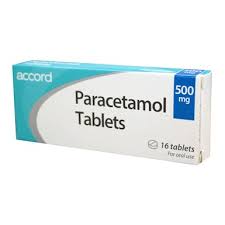Plaquenil
Plaquenil, known generically as hydroxychloroquine, is a distinguished medication frequently employed in the management of various autoimmune disorders and malaria. It is predominantly indicated for ailments such as rheumatoid arthritis, lupus, and specific malaria infections. As a member of the esteemed class of drugs known as disease-modifying antirheumatic drugs (DMARDs), Plaquenil possesses unique properties that assist in modulating the immune response and alleviating inflammation within the body.

The Purpose of Plaquenil
Plaquenil is primarily utilized for the treatment of:
Rheumatoid Arthritis: This autoimmune disorder sees the immune system erroneously targeting the joints, resulting in discomfort, swelling, and rigidity. Plaquenil plays a pivotal role in mitigating the symptoms and inflammation associated with this condition.
Systemic Lupus Erythematosus (SLE): A persistent autoimmune illness that can impact multiple organs, including the skin, kidneys, and heart. Plaquenil aids in managing symptoms by diminishing inflammation and regulating the immune system’s activity.
Malaria: Plaquenil serves both as a preventive and therapeutic agent against malaria, a disease transmitted by mosquitoes and caused by parasites. While its use for malaria has diminished due to drug resistance, it remains a vital treatment option in certain areas.
Other Autoimmune Disorders: Occasionally, Plaquenil is prescribed off-label for other autoimmune conditions, such as Sjogren’s syndrome or inflammatory skin disorders like dermatitis.
Mechanism of Action of Plaquenil
The mechanism by which Plaquenil operates is believed to involve its influence on the immune system and its response to inflammation. In conditions such as rheumatoid arthritis and lupus, the immune system mistakenly attacks healthy tissues. Plaquenil aids in modifying this immune response, thereby preventing tissue damage. Additionally, its anti-inflammatory properties contribute to the reduction of swelling, pain, and joint deterioration in arthritic conditions.
When employed in the treatment of malaria, Plaquenil exerts its effects by disrupting the malaria parasite’s capacity to proliferate within red blood cells, thereby facilitating the eradication of the infection from the body.
Dosage and control
Plaquenil is generally administered in tablet form, with the dosage tailored to the specific condition being addressed and the patient’s individual response to the treatment.In the management of creaky arthritis, the standard dosage typically ranges from 200 to 400 mg daily, divided into one or two doses.
For lupus, the dosage mirrors that of creaky arthritis but may be adjusted according to the activity of the disease and the patient’s response.
In treating malaria, an initial higher dose may be prescribed, followed by maintenance doses.
It is imperative to adhere strictly to the prescribed dosage and to avoid discontinuing the medication abruptly without consulting a healthcare professional, as this may precipitate a resurgence of the underlying condition.
Side Effects of drug
As with any medication, Plaquenil may induce side effects. While most are mild, some can be more severe. Commonly pass on side effects include:
Gastrointestinal disturbances: These may manifest as nausea, diarrhea, ventral cramps, and reduced appetite.
Dermatological reactions: Certain individuals might case rashes or alterations in skin pigmentation, particularly upon sun exposure.
Visual disturbances: In rare instances, prolonged use of drug can result in retinal damage, leading to vision issues; thus, regular eye examinations are essential during treatment.
Muscle weakness: Some patients may report feelings of weakness or discomfort in their muscles.
Headaches: Mild to moderate headaches are a recognized side effect of Plaquenil.
Dizziness: Lightheadedness or dizziness may occur, especially when rising quickly.
While serious side effects are uncommon, they can arise. These may include severe allergic reactions, alterations in heart rhythm, or hematological disorders. Patients should seek immediate medical regard if they notice mark such as unusual mar or bleeding, signs of infection, or difficulty in breathing.
Alternatives to Plaquenil
There exists a range of alternative therapies for autoimmune disorders and malaria, tailored to the specific ailment at hand. For instance, in the realm of rheumatoid arthritis, other disease-modifying antirheumatic drugs (DMARDs) such as methotrexate or sulfasalazine may be explored. In the case of lupus, corticosteroids or biologic agents could also be viable options. When addressing malaria, alternative treatments like chloroquine or quinine may be recommended, contingent upon the malaria strain and prevailing local resistance trends.
Conclusion
Plaquenil (hydroxychloroquine) stands as a multifaceted and significant pharmaceutical agent, primarily employed. The management of autoimmune diseases such as rheumatoid arthritis. Lupus, in addition to its role in the prevention and treatment of malaria. Its mechanism involves the modulation of the immune response. The alleviation of inflammation, thereby enhancing the quality of life for those afflicted by these conditions. While it is generally well-tolerated, Plaquenil may present side effects, necessitating vigilant monitoring over prolonged use. Particularly concerning ocular health and laboratory assessments. Should you be prescribed Plaquenil, it is imperative to adhere to your healthcare provider’s guidance. Participate in regular evaluations to ensure the medication’s safe and effective application.






